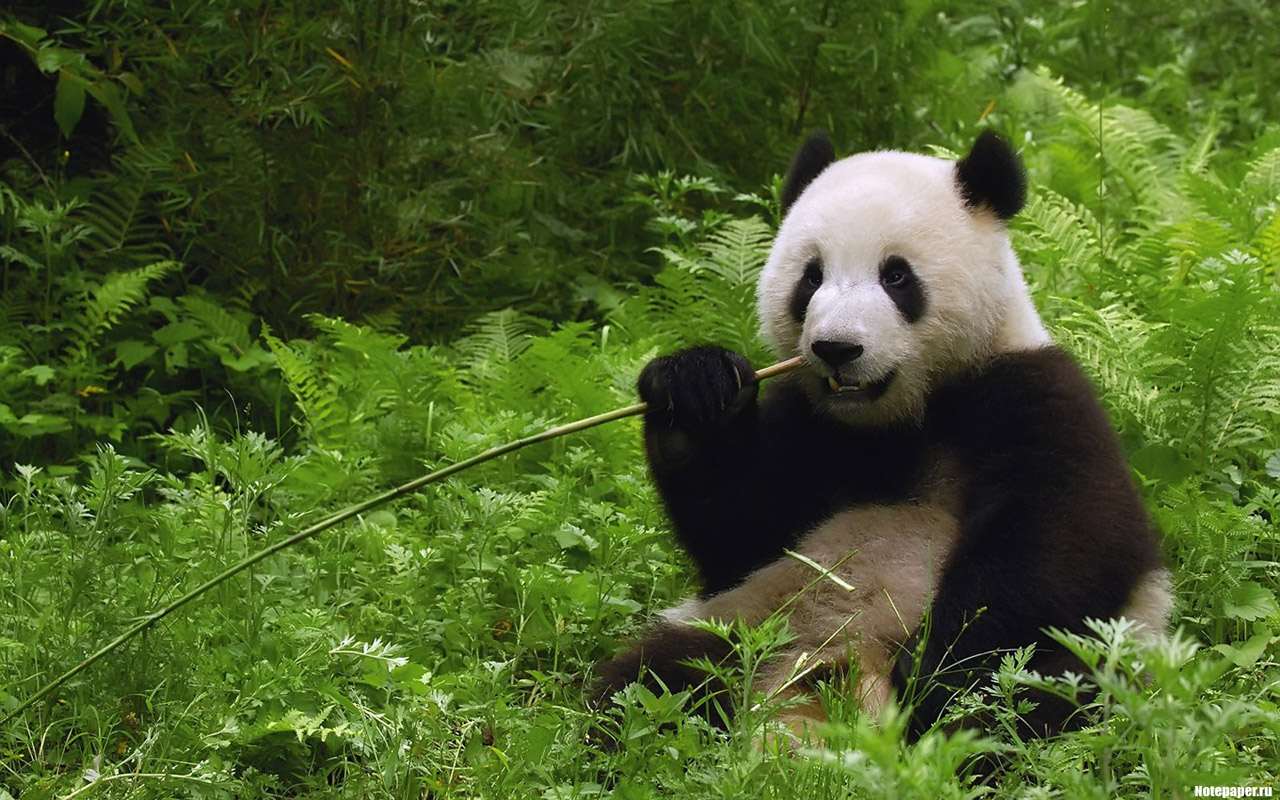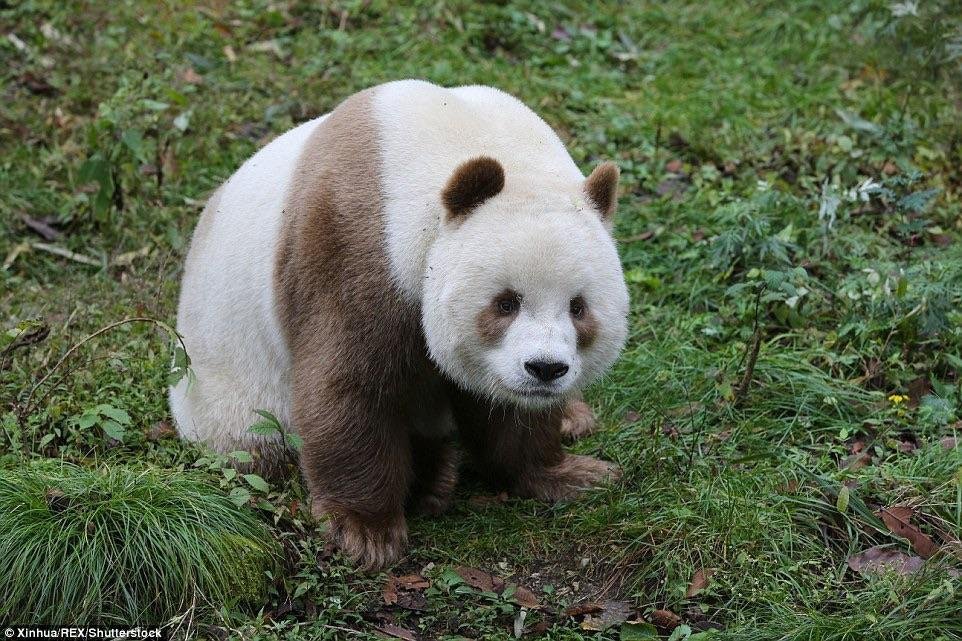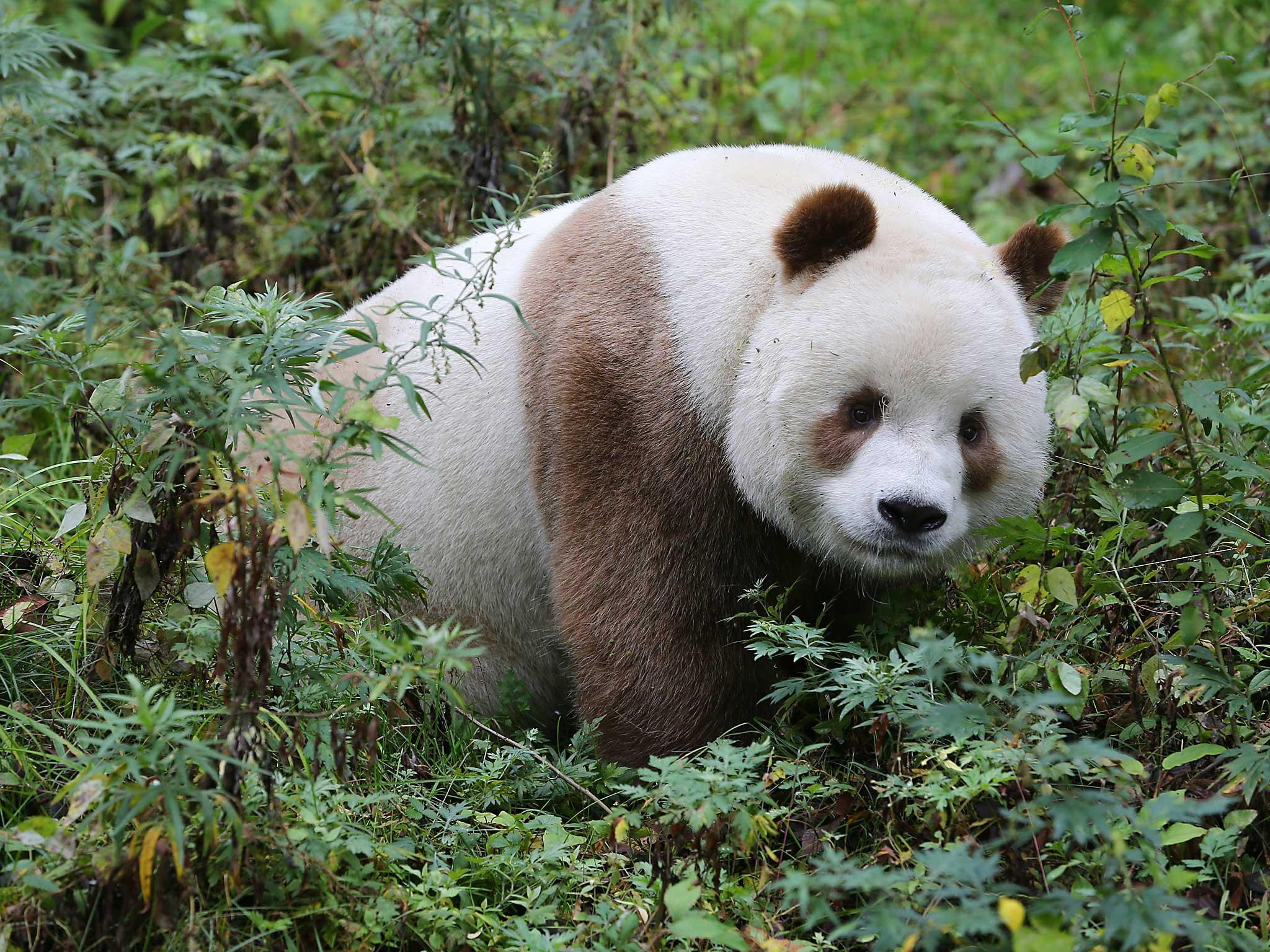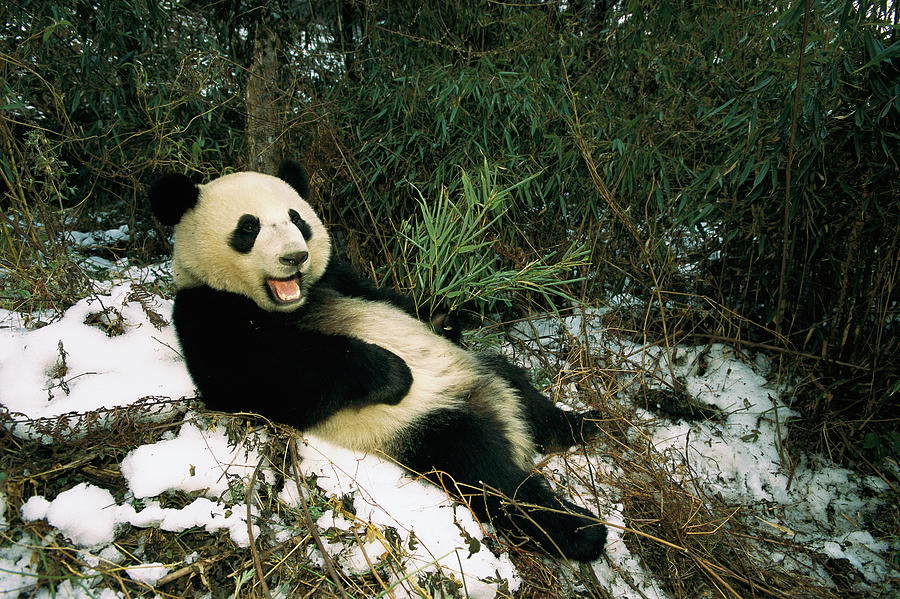
En Fotos Qizai, el único oso panda marrón en cautiverio
Giant pandas include two subspecies, Ailuropoda melanoleuca qinlingensis (A. m. qinlingensis) and Ailuropoda melanoleuca sichuanensis (A. m. sichuanensis). Due to the influence of the geographical barrier of the Jialing River and human activities, the genes of the two subspecies have been unable to communicate for 50,000 years.

Голос панды mp3 голос звук слушать Большая панда (Ailuropoda
Giant pandas (Ailuropoda melanoleuca) are one of the vulnerable animals in the world, and have survived on earth for at least eight million years [1, 2].The Qinling giant panda (Ailuropoda melanoleuca qinlingensis), a subspecies of the giant panda, is a precious species because of its unique morphological characteristics and genetic features.From the fourth investigation report in 2015 by.

Интересное о бамбуковом медведе. Большая панда. Ailuropoda melanoleuca
Ailuropoda m. qinlingensis has a smaller skull size and larger molar size than Ailuropoda m. melanoleuca . In addition to cranial and dental size, Ailuropoda m. qinlingensis differs from the nominate subspecies in pelage coloration . The Qinling subspecies is dark brown on chest and brown on venter.

Qinling Panda Unsung Animals Wiki Fandom
In the present study, the taxa of 10 ticks, collected from Qinling giant pandas (Ailuropoda melanoleuca qinlingensis) in Qinling Mountains of China in April 2010, were determined using morphology and molecular markers (nucleotide ITS2 rDNA and mitochondrial 16S). Microscopic observation demonstrated that the morphological features of these.

Qinling panda (Ailuropoda melanoleuca qinlingensis) Panda, Panda
The Qinling panda (Ailuropoda melanoleuca qinlingensis), also known as the brown panda, is a subspecies of the giant panda, discovered in 1959, but not recognized as a subspecies until 2005. [2] [3] Besides the nominate subspecies , it is the first giant panda subspecies to be recognized.

Giant Panda Ailuropoda Melanoleuca Photograph by Katherine Feng Fine
Ailuropoda melanoleuca qinlingensis. The Qinling panda ( Ailuropoda melanoleuca qinlingensis ) is a subspecies of the giant panda, discovered in the 1960s but not recognized as a subspecies until 2005. Besides the nominate subspecies, it is the first giant panda subspecies to be recognized. Q. starts with.

Due to a mutation, these are giant pandas
The Qinling panda ( Ailuropoda melanoleuca qinlingensis) is a subspecies of the giant panda, discovered in the 1960s but not recognized as a subspecies until 2005. Disregarding the nominate subspecies, it is the first giant panda subspecies to be recognized.

Giant panda Bear Conservation
Background: Semen cryopreservation has become an essential tool for conservation efforts of the giant panda (Ailuropoda melanoleuca); however, it is severely detrimental to sperm quality. Evidence has shown that antioxidants have the potential to reverse cryopreservation-induced damage in sperm. The purpose of this study was to screen effective antioxidants that could retain sperm quality.

Ailuropoda melanoleuca
The Qinling panda ( Ailuropoda melanoleuca qinlingensis) is a subspecies of the giant panda, discovered in the 1960s but not recognized as a subspecies until 2005. Other than the nominate subspecies ( Ailuropoda melanoleuca melanoleuca) it is the first giant panda subspecies to be recognised. It has a smaller skull than melanoleuca melanoleuca.

This is the world's only brown panda indy100
The giant panda (Ailuropoda melanoleuca) is one of the most endangered animals in the world and is recognized worldwide as a symbol for conservation. The Qinling subspecies of giant panda (Ailuropoda melanoleuca qinlingensis) is highly endangered; fewer than 350 individuals still inhabit the Qinling.

Oso panda marrón o panda de Qinling (Ailuropoda melanoleuca
The giant panda (Ailuropoda melanoleuca) is one of the most endangered animals in the world and is recognized worldwide as a symbol for conservation.The Qinling subspecies of giant panda (Ailuropoda melanoleuca qinlingensis) is highly endangered; fewer than 350 individuals still inhabit the Qinling Mountains.Last year, China announced the establishment of the first Giant Panda National Park.

Ailuropoda melanoleuca qinlingensis
LBP (2.0 mg/mL) or RSV (50 μM) are the best candidate antioxidants for inclusion in the freezing medium for improving the quality of panda spermatozoa, during semen cryopreservation. Background: Semen cryopreservation has become an essential tool for the reproduction and long-term preservation of giant pandas (Ailuropoda melanoleuca). However, cryopreservation is severely detrimental to sperm.

BiologiaVida Raro Urso Panda Marrom / Rare Giant Brown Panda
Abstract. Eight adult (six male and two female) wild Qinling giant pandas (Ailuropoda melanoleuca qinlingensis) from China National Foping Nature Reserve were tracked, and their dental data collected and recorded from October 2010 to April 2014. Each panda had dental abnormalities of varying severity. Dental wear and fracture were the most common conditions. Absent teeth were common, with.

Giant Panda Ailuropoda Melanoleuca Photograph by Pete Oxford Fine Art
To assess organochlorine compound (OC) contamination, its possible sources, and adverse health impacts on giant pandas, we collected soil, bamboo, and panda fecal samples from the habitat and research center of the Qinling panda (Ailuropoda melanoleuca qinlingensis)-the rarest recognized panda subspecies.

Коричневая панда (61 фото) красивые фото и картинки
Media in category "Ailuropoda melanoleuca qinlingensis" The following 5 files are in this category, out of 5 total. Ailuropoda melanoleuca qinlingensis.jpg 1,336 × 1,336; 821 KB. Qinling panda 02.jpg 1,090 × 725; 126 KB. Qinling panda.jpg 1,090 × 725; 120 KB.

GB16005a Pandas (Ailurus fulgens, Ailuropoda melanoleuca, Ailuropoda
Ailuropoda melanoleuca qinlingensis Taxonavigation [edit] Taxonavigation: Ursida Superregnum: Eukaryota Cladus: Unikonta Cladus: Opisthokonta Cladus: Holozoa Regnum: Animalia Subregnum: Eumetazoa Cladus: Bilateria Cladus: Nephrozoa Superphylum: Deuterostomia Phylum: Chordata